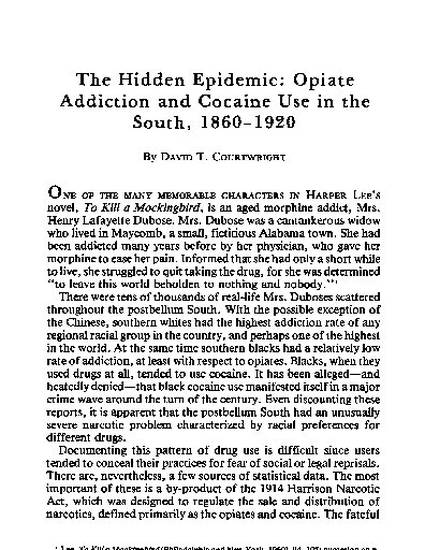
One of the many memorable characters in Harper Lee's novel, To Kill a Mockingbird, is an aged morphine addict, Mrs. Henry Lafayette Dubose. Mrs. Dubose was a cantankerous widow who lived in Maycomb, a small, fictitious Alabama town. She had been addicted many years before by her physician, who gave her morphine to ease her pain. Informed that she had only a short while to live, she struggled to quit taking the drug, for she was determined "to leave this world beholden to nothing and nobody."
There were tens of thousands of real-life Mrs. Duboses scattered throughout the postbellum South. With the possible exception of the Chinese, southern whites had the highest addiction rate of any regional racial group in the country, and perhaps one of the highest in the world. At the same time southern blacks had a relatively low rate of addiction, at least with respect to opiates. Blacks, when they used drugs at all, tended to use cocaine. It has been alleged-and heatedly denied-that black cocaine use manifested itself in a major crime wave around the turn of the century. Even discounting these reports, it is apparent that the postbellum South had an unusually severe narcotic problem characterized by racial preferences for different drugs.
Available at: http://works.bepress.com/david_courtwright/3/

Originally published in The Journal of Southern History Vol. 49, No. 1 (Feb., 1983) (pp. 57-72) http://www.jsh.rice.edu/ Copyright of the Southern Historical Association http://www.uga.edu/sha/